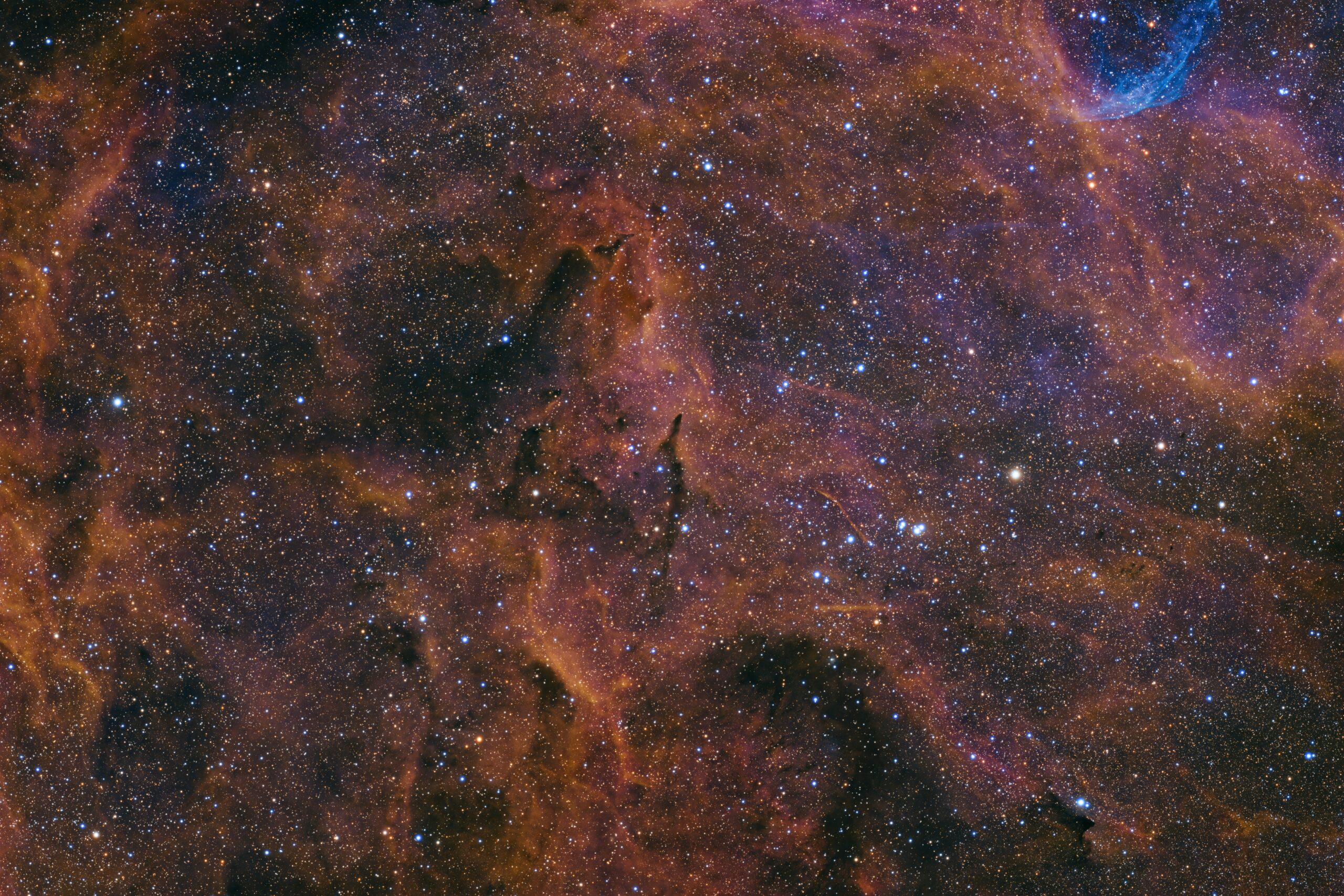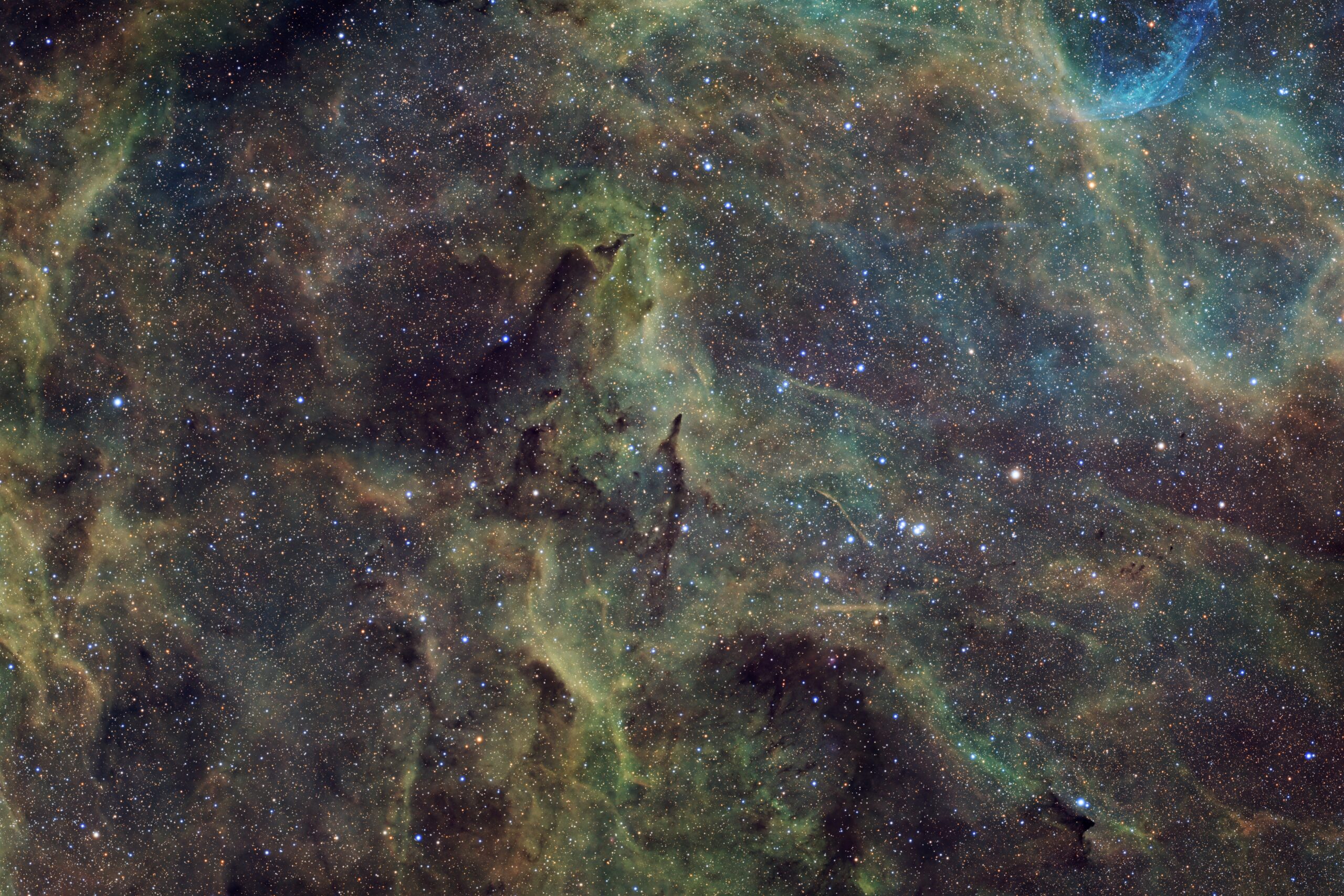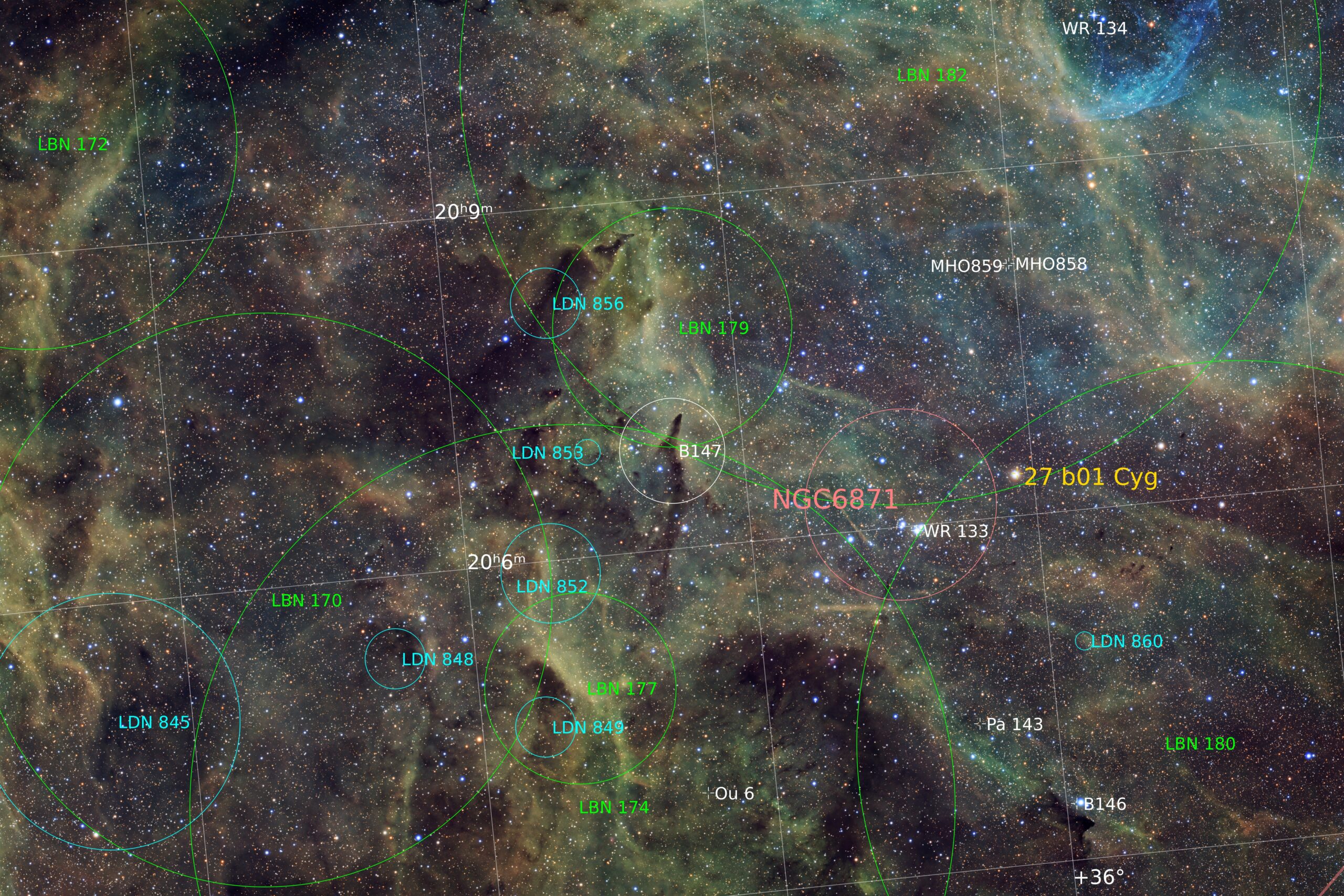 Dark Nebulae
Dark Nebulae
Barnard 147 et al.

Wide field in Cygnus with dark cloud Barnard 147 right in the center, the small snake-like structure pointing upwards.
Many more dark nebulae with LDN numbers embedded in the huge complex of glowing hydrogen (H), oxygen (O) and sulfur (S) form a wonderful landscape in space.
Right next to Barnard 147 we find open star cluster NGC6871 consisting of only about 50 hot young stars. Its brightest member is Wolf-Rayet star WR 133 being part of a double star system of very bright and massive young stars. The Wolf-Rayet component has a mass of about 10 solar masses and is pretty nitrogen-rich while the other component is even bigger and contains more than 20 solar masses. The fact that a WR-star shows high abundance of heavier elements than He is that is has already blown its outer shells consisting mainly of Hydrogen and Helium into space and that we look now straight on the core of the star which is richer on elements created by fusion processes in the past.
The star cluster is about 5000 light years away from earth.
On top right we see a part of the bluish gas cloud around Wolf-Rayet star WR 134.
A tiny and very faint planetary nebula Ou6, discovered by Outers, is also visible.
I created two different images by combining the frames from H, O and S in different ways. The more greenish image using the so-called Hubble-palette while the greenish is a more „free-styled“ combination.
Borg 90FL
1.08 Flattener
ZWO OAG
ASI 2600MM Pro
ZWO EFW
Baader Ultra-Narrowband 3.5/4nm, RGB Broadband
H: 40x300s
OIII: 36x300s
SII: 36x300s
R: 20x120s
G: 20x120s
B: 20x120s
Total Integration: 11h 20m
Bortle 4-5
PixInsight

